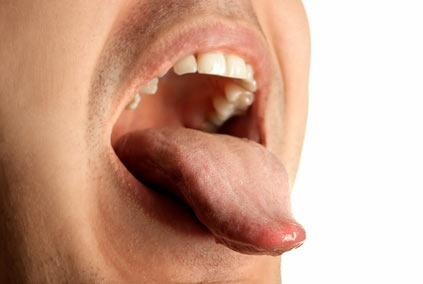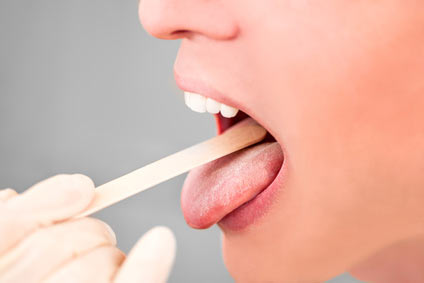16 Tongue Exercises For Sleep Apnea
How to Improve Your Obstructive Apnea with Tongue Exercises

If you are searching for examples of tongue exercises for sleep apnea, then you came to the right place!
In this page you will learn the most common tongue exercises that will help you improve obstructive sleep apnea.
How Can Tongue Exercises Improve OSA?
The tongue can play an important role in the quality of breathing during sleep. Like any other muscle, the tongue relaxes while you sleep, which is fine as long as you have a normal size tongue.
However, if a large tongue relaxes during sleep, then it can collapse and fall back down to your throat. This can cause obstructive apnea episodes, which can be dangerous to your health and life.
The Right Apnea Patient for Tongue Exercises
Considering that there are many risk factors for having sleep apnea, is very important to understand if these tongue exercises can help you.
So check if these facts apply to you:
1. Check in the mirror if you have a long or large tongue
Relax in front of the mirror in a sitting position, with the head in a neutral position, your mouth wide open and with your tongue stucking out to maximum.
If you can see the soft palate and uvula completely, then your tongue is not large enough to cause you OSA.
If the uvula starts to be covered by your tongue, then these exercises can help you.
To have a reference, I included a video where you can see different types of large tongues. The classification is made by using the Mallampati Score, where the score 4 is the most severe, and score 1 is a normal size.
So what score do you have for your tongue? Watch this video to learn how to use the Mallampati Score:
How to Check the Size of Your Tongue?
Some people with large tongue can have small indentations on the edge of the tongue, caused by touching the teeth while the tongue is relaxed in the mouth.
Sometimes they can even bite their tongue caused serious marks.
This is another sign that tongue exercises for sleep apnea can be effective if practiced regularly.
2. Confirm that your tongue is causing Snoring or OSA
More strategies for diagnosing sleep apnea
Check if your snoring or apnea episodes (when your breathing stops in sleep) are caused by your tongue which collapses on the back of your throat.
Your GP or family doctor can help you identify this issue.
If you have central sleep apnea, or OSA caused by deviated septum, swollen tonsil or obesity, the tongue exercises for sleep apnea can't work.
Do tongue exercises work to treat sleep apnea?
If you think that exercises for sleep apnea are just a myth, then you might change your mind: there is scientific evidence suggesting that tongue exercises can cure sleep apnea.
One of the studies was published in 2009 in the American Journel of Respiratory and Critical Care Medicine. Click here to see the results of the study.
The scientists recruited a group of people with obstructive sleep apnea and split them into two groups:
- the first group was trained to do breathing and nasal exercises daily.
- the second group did thirty minutes of tongue exercises for sleep apnea and other oropharyngeal exercises, daily.
The results of the study gave clinical evidence that tongue exercises for sleep apnea can be successful. After three months of study, the patients who did tongue and throat exercises showed reductions in the neck circumference, snored less, slept better and reduced their sleep disorder by 39%.
However, the first group showed almos no improvement in their sleep quality and snoring.
Now, let's get started with our special exercises:
16 Tongue Exercises for Sleep Apnea:
Consult your doctor if you suspect sleep apnea
If you have obstructive sleep apnea, you should consult with your doctor and continue with the treatment given.
Doing tongue exercises will help to strengthen the muscles of the jaw, but the results will appear in time (after 3 to 9 weeks).
Some tongue exercises for sleep apnea are fun to do, so let's get started!
Do each exercise for 5 minutes, 2 times a day, unless otherwise specified:
Exercise 1
Place your tongue on the upper alveolar ridge just behind teeth.
To find that spot, say door, and it's the spot that your tongue touches the soft palate.
Leave your tongue for 5 minutes, and if you need to swallow, do so.
Exercise 2
Place the tip of the tongue on that same spot (behind teeth), and make that clicking noise when you tsk, tsk someone.
Exercise 3
Lightly anchor your tongue between your teeth.
Swallow five times.
Repeat this exercise 5 times daily.
Exercise 4
Start by sitting up straight, your head in a chin tuck and looking ahead. Your lips and mouth should be closed.
- place the tip of your tongue behind your teeth. slowly raise your chin towards the ceiling.
- while tilting your chin towards the ceiling, with constant pressure of your tongue towards the palate, slowly slide your tongue from the front of your teeth to the back of your mouth.
- when your tongue is at the back of your mouth, lift the tongue and move it to the front. Repeat this movement ten times.
You should feel the front of your neck tightening up. Hold this position for ten seconds. Then bring your chin back to be parallel with the floor.
Repeat this exercise ten times daily.
The purpose of this neck and tongue exercise for sleep apnea is to increase the muscle tone in the front of the neck and the tongue muscles.
Exercise 5
Clinch a pen or a pencil between your teeth for ten minutes or until your jaw is sore, just before bedtime.
This exercise will strengthen the muscles of the jaw.
Exercise 6
To tighten the muscles that keep the mouth closed, you can chew gum before bedtime until the jaw is tender.
Exercise 7
Tongue exercise for snoring using a spoon:
- place the spoon on the palate, behind the front teeth.
- press and maintain elevation of the top surface of the tongue against textured form as long as possible.
- repeat this elevation 3 times
Exercise 8
Gargling for 5 minutes. Twice daily.
Exercise 9
Run your tongue round the inside of your mouth, push it between your lips, up round the outside of your teeth, over the roof of your mouth and down on the base of your mout.
Do this exercise for ten seconds.
Exercise 10
Say lah lah lah lah lah ... at easy speed.
Do this five times, feeling the tip of your tongue curl up to touch just behind your top teeth.
Exercise 11
Some back of the tongue sounds - say:
- kuh kee kah - kuh kee kah - kuh kee kah
- guh gee gah - guh gee gah - guh gee gah
- kuh tah kah - kuh guh kee - kuh guh kee
Do this exercise five times.
Exercise 12
Practise saying ssss without allowing any air to come out through your nose.
Exercise 13
Make the following sounds, pausing between:
- a....p a....p a....p
- a....b a....b a....b
- a....m a....m a....m
- a....n a....n a....n
Gradually put the two sounds together, with no pause between.
Exercise 14
Make the following sounds, pausing between:
- ma....pa ma....pa ma....pa
- ma....ba ma....ba ma....ba
- na....ta na....ta na....ta
- na....da na....da na....da
- ka...ing ka...ing ka...ing
- ga...ing ga...ing ga...ing
Gradually put the 2 sounds together, with no pause between.
Exercise 15
Make five ah sounds. Pause between each ah.
Exercise 16
Make the following sounds, pausing between:
- m....ba m....ba m....ba
- n....da n....da n....da
- n....ga n....ga n....ga
Gradually put the two sounds together, with no pause between.
Adapted from: many websites that teach how to improve singing performance. You can find these exercises scattered online. You just need time to find them all.
When performing these simple tongue exercises for sleep apnea, you should not feel dizzy, pain or discomfort. Perform the exercises two times a day, unless otherwise specified.
While these tongue exercises for sleep apnea help increase the muscle tone of your tongue and neck, they may take some time to reduce the need for a CPAP machine.
As in any physical therapy program, it would require a strong commitment and consistent and sustained practice to see the results.
Some more interesting pages for you to check out:
- Discover other types of exercises for sleep apnea.
- Mouth exercises for OSA patients.
- Herbal Remedies and Ayurvedic Treatment for Apnea Patients
Home › Alternative Cures › Tongue Exercises for Sleep Apnea








